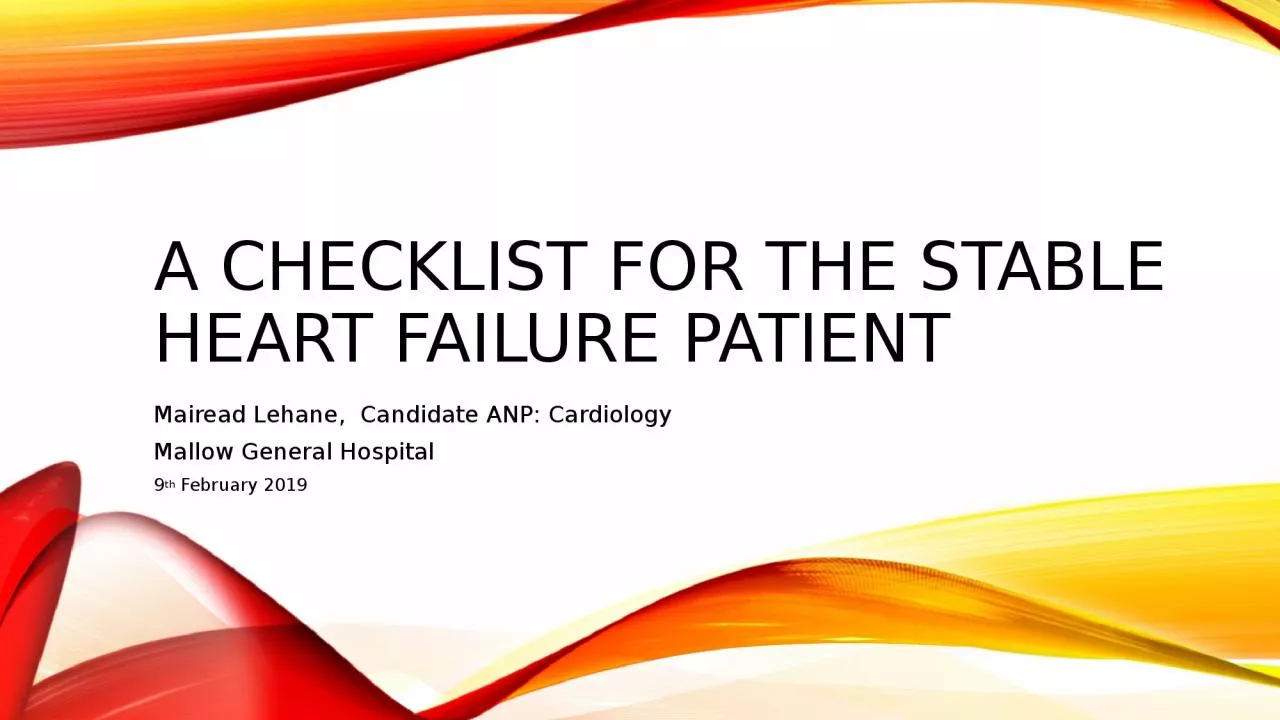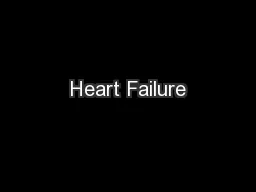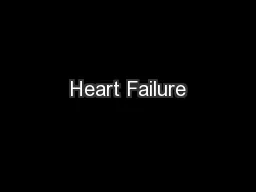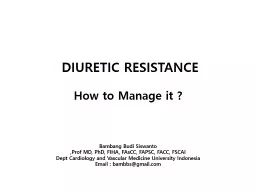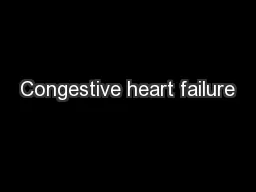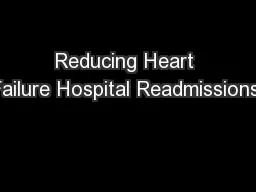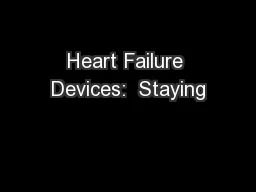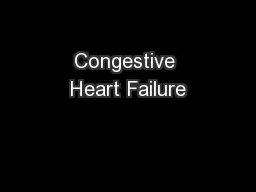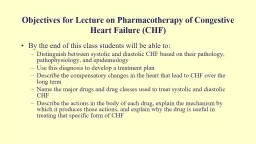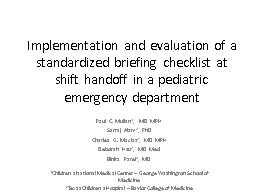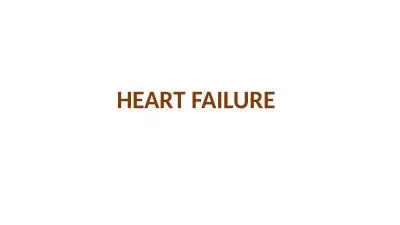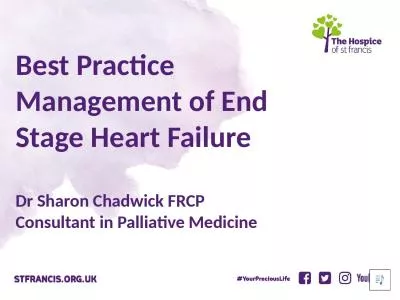PPT-A checklist for the stable heart failure patient
Author : vivian | Published Date : 2023-11-21
Mairead Lehane Candidate ANP Cardiology Mallow General Hospital 9 th February 2019 The stable heart failure patient Patients with heart failure HF are often
Presentation Embed Code
Download Presentation
Download Presentation The PPT/PDF document "A checklist for the stable heart failure..." is the property of its rightful owner. Permission is granted to download and print the materials on this website for personal, non-commercial use only, and to display it on your personal computer provided you do not modify the materials and that you retain all copyright notices contained in the materials. By downloading content from our website, you accept the terms of this agreement.
A checklist for the stable heart failure patient: Transcript
Download Rules Of Document
"A checklist for the stable heart failure patient"The content belongs to its owner. You may download and print it for personal use, without modification, and keep all copyright notices. By downloading, you agree to these terms.
Related Documents

